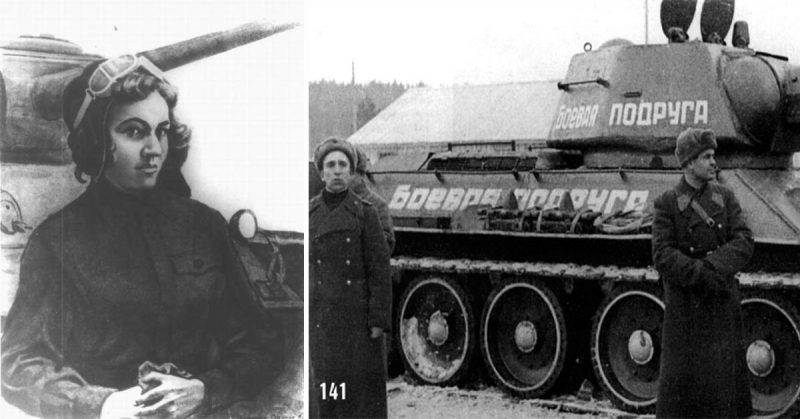They say that “hell hath no fury like a woman scorned.” But if you take her love away, it gets a helluva lot worse – something the Germans would find out the hard way.
Mariya Vasilyevna was born on August 16, 1905, in Crimea as one of ten children. Coming from a family of dirt poor peasants, she was a serf – which is a fancy word for slave. As such, they could neither go anywhere nor do anything without their landlord’s permission.
It was hardly surprising, therefore, that she took to Communism like a fish to water. Awful though that may sound to the rest of us, it freed her from a life of indentured bondage and allowed her to get an education, a job in a cannery, and later, work as a telephone operator.
Then in 1925, she met the love of her life – Ilya Oktyabrskaya. The Russian Empire had given way to the Soviet Union three years before, and Ilya was a Soviet army officer who must have taken her on interesting dates because Mariya became fascinated with the military.
She joined the “Military Wives Council,” trained as an army nurse, learned how to drive cars (unusual for women back then), and how to use different weapons. She once wrote to her sister and said, “Marry a serviceman and you serve in the army.”
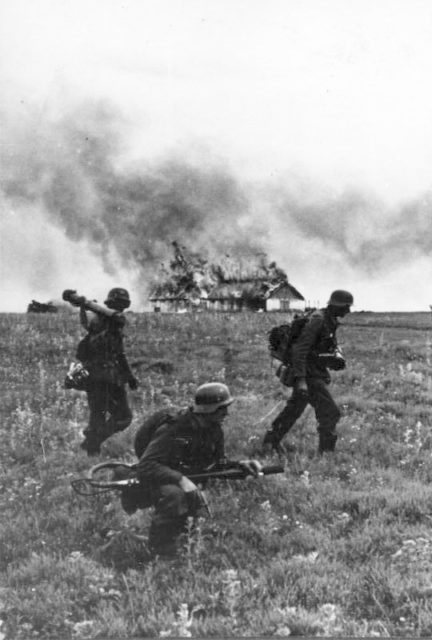
Despite their best efforts, the couple couldn’t have children, but they at least had each other. And they comforted themselves with the sincere belief that they were helping to build a new and better country for their people. It was almost perfect.
Until June 22, 1941. Wanting to increase German territory and destroy communism, Hitler ordered the invasion of Russia – known as Operation Barbarossa. It involved 3.8 million German personnel, 3,350 tanks, 2,770 planes, and 7,200 artillery pieces – making it the largest invasion in history.
Hitler had originally made a pact with Stalin to keep the Soviet Union out of the war. While it lulled the Soviets into a false sense of security, they nevertheless prepared for an invasion. Yet when it came, they were still taken by surprise.
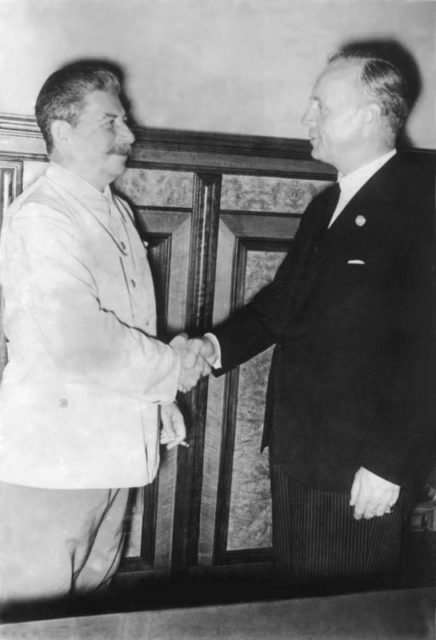
The Red Army General Staff were convinced that the Germans would come north of the Pripyat Marshes into Belorussia – which was correct. Stalin believed, however, that the invasion would come south of it, since that led to the economically important regions in Ukraine.
They were still deploying their forces when the Germans came. And while some Soviet tank models were superior to what the Germans had, they didn’t have enough of them. The Soviets also lacked ammunition, radios, and supply trucks – giving the Germans a massive advantage.
For her safety, Mariya was sent to Tomsk in Siberia, and there did her best to keep her spirits up. But advanced though Soviet tanks were, their infrastructure and communications systems were otherwise. Two years would pass before she learned the fate of her beloved Ilya.
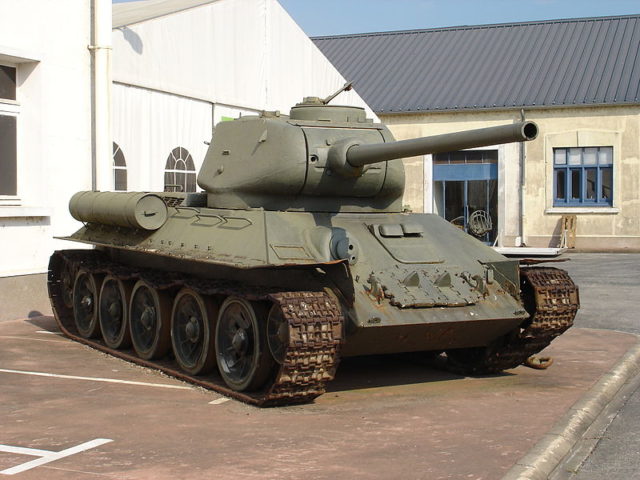
He was killed by German soldiers just outside Kiev in August 1941. Mariya went berserk. Then she sold everything she had and wrote to Stalin:
My husband was killed in action defending the motherland. I want revenge on the fascist dogs for his death and for the death of Soviet people tortured by the fascist barbarians. For this purpose, I’ve deposited all my personal savings – 50,000 rubles – to the National Bank in order to build a tank. I kindly ask to name the tank ‘Fighting Girlfriend’ and to send me to the frontline as a driver of said tank.
Probably terrified she’d come after him if he refused, Stalin wrote back and said, “Sure!”
The State Defense Committee weren’t as convinced. But they did understand the publicity value she provided, so they got her a T-34 medium tank.
She was then put through a five-month tank training program – unlike male recruits who were given far less time before being sent to the war front (often still unprepared). That done, Mariya was assigned to the 26th Guards Tank Brigade as a driver and mechanic in September 1943 – becoming a laughingstock.
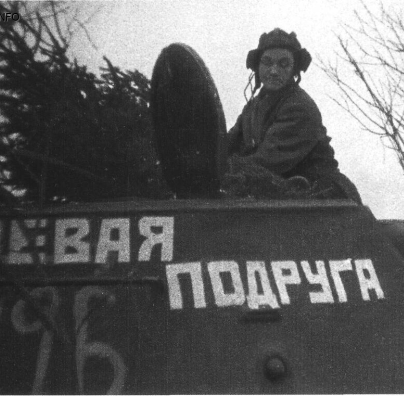
A woman!? In a tank!? Named Fighting Girlfriend!? There was a real war going on with real people dying! This was no time for a publicity stunt!
Clearly, they hadn’t heard about what happens when a woman loses the love of her life – especially when she loses them to Nazis. But her sister knew, because Mariya wrote to her, claiming that, “I’ve had my baptism by fire… Sometimes, I’m so angry I can’t even breathe.”
Everyone else would find out on October 21, 1943, in Smolensk. Located 220 miles west-southwest of the capital at Moscow, the Germans had taken the city in 1941, but could go no further. The Russians took most of it back on September 25, 1943, but were still dealing with German resistance.
Mariya revved up Fighting Girlfriend and charged – taking out several anti-tank guns and machine gun nests before getting hit. Against orders, she jumped out, and despite heavy enemy fire, fixed the damage before jumping back in to fight. The last German defense rings were finally gone, and their route to Moscow was no longer secure.
They called her “mother” after that, but it wasn’t enough. They also promoted her to the rank of Sergeant.
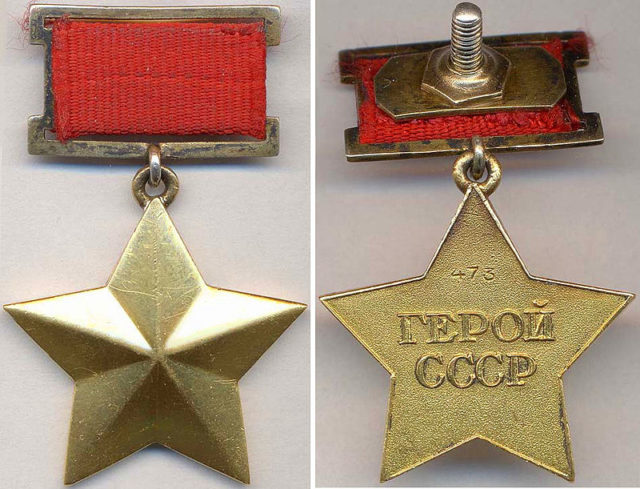
Weeks later on November 17, the Soviets recaptured the town of Novoye Selo in Vitebsk. Mariya attacked German defensive positions till an artillery shell blew out her tank tracks. Under cover fire, she again jumped out to fix her beloved tank, before rejoining her unit.
January 17, 1944, saw her outside the town of Shvedy, still in Vitebsk. Mariya attacked several German trenches, machine-gun nests, and artillery guns, when, you guessed it – her tank was hit by a German anti-tank shell.
As usual, she hopped out to fix the Fighting Girlfriend. She had just done so when her luck ran out. Another anti-tank shell blasted several meters away, showering her with shell fragments – some of which slammed into her head.
Mariya never regained consciousness. She was taken to a hospital near Kiev and lay in a coma for two months before finally rejoining her beloved Ilya on March 15, 1944. By August, they made her a Hero of the Soviet Union.
